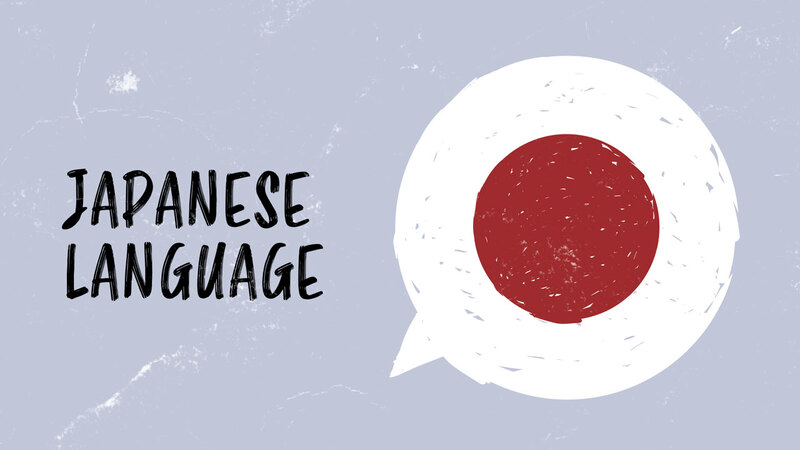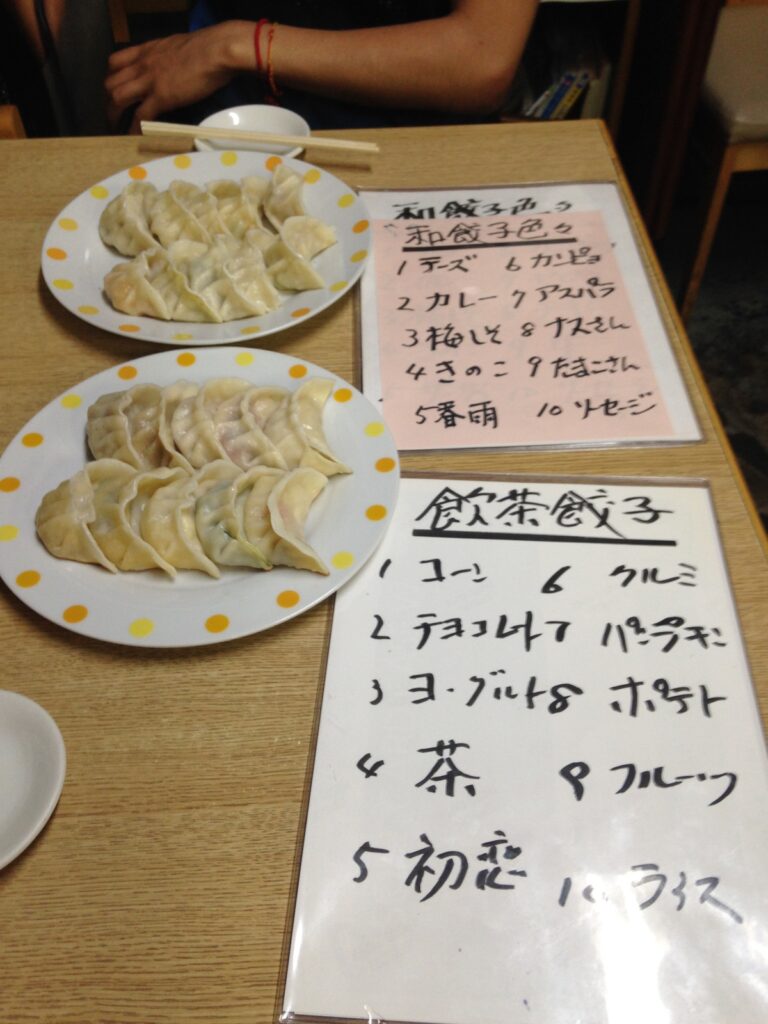The Japanese Language: a Masterclass for Beginners
With nearly 125 million speakers, the Japanese language is one of the most popular languages on the planet. Japanese is a great language to learn as Japan has a massive influence on global technology, entertainment, and culinary arts. In this beginner-friendly guide, I’ll help you understand the fundamentals of the Japanese language, from reading and writing to speaking and listening.
Why me? I have a university degree in Japanese, JLPT N1 certification, and lived and worked in Japan for several years. (You’ll see some of my experiences along the way.) So let’s go!
Here’s a photo of me when I first went over to Japan to study!
Table of contents
The Japanese Writing System
One of the first challenges encountered by students of the Japanese language is its complex writing system. Unlike many languages that use a single alphabet, Japanese incorporates several sets of characters, each serving a unique purpose in the language. Japanese uses two phonetic alphabets, hiragana and katakana, as well as Chinese characters, kanji. Now, how are they each used? Let me break it down for you.
Hiragana: the First Phonetic Alphabet
Hiragana is almost always the first script learners are introduced to. This is because you can’t write any sentence in Japanese without hiragana! This set of 46 characters represents every sound in the Japanese language, making it the backbone for how words are pronounced.
Each character in hiragana represents a vowel or a combination of a consonant and a vowel, with just a couple of exceptions.
For example, the word for “tomorrow,” あした (ashita), consists of:
- あ (a)
- し (shi) and
- た (ta)
Hiragana is mostly used for native Japanese words for which there are no kanji, as well as for grammatical elements such as particles and verb endings (more on all of these later!). You can also use it to write words you do not know the kanji for.
Fun fact: Hiragana was used almost exclusively by women early on, and the world’s first novel, The Tale of Genji, was written by the Japanese woman Murasaki Shikibu in the 11th century!
Katakana: the Second Phonetic Alphabet
Now this might sound strange, but Japanese actually has two phonetic alphabets. (This is because they were both developed independently in history.) This script is primarily used for foreign loanwords, company names, certain onomatopoeic sounds, and sometimes for emphasis or style, much like italics in English.
Here’s my insider tip: Most learners study hiragana first, then katakana. But if you are moving to Japan soon, I’d recommend studying katakana first. This is because you might find some katakana vocabulary (like the example below) that come from English. Being able to recognize these when written can really help you identify words!
Just like hiragana, there are 46 basic katakana characters.
For example, the word for “America”, アメリカ (Amerika), consists of:
- ア (a)
- メ (me)
- リ (ri)
- カ (ka)
Katakana characters tend to have straighter lines and more angular shapes, which can make them easier to distinguish from the more cursive hiragana.
Fun fact: Katakana was developed by Buddhist monks in the 9th century!
Kanji: Chinese Characters
Kanji, or Chinese characters, are logographic characters that represent words or ideas. Many words, whether they are of native Japanese origin or were borrowed from Chinese long ago, can be written in kanji.
Many words have their own kanji or are created by combining kanji with kanji. For example, the word for “dog” is 犬 (inu), which has its own character. But to make the word for “puppy,” you add the kanji for “child” next to it to make 子犬 (koinu).
Each kanji has one or more readings, which can be divided into on readings — derived from the original Chinese pronunciation — and kun readings — native Japanese readings.
For example, the character 日, which means “day” or “sun,” can be read as hi or bi (its on reading) or nichi (its kun reading). Actually, the word 日曜日 (nichiyoubi, Sunday), uses the same character twice, but each with a different pronunciation! Which reading you use comes down to memorization and context, so take care when studying.
It takes a while to get a grip on all the kanji needed for everyday life. These common-use kanji are called the 常用漢字 (jouyou kanji), and the Japanese Ministry of Education says that there are 2,136 of them. However, a few hundred kanji are enough to begin navigating everyday life in Japan, since they frequently appear in almost everything, including public signs, menus, and newspapers.
Here’s a menu from a gyoza specialty menu which uses all three writing systems! Can you figure out what the flavors are?
To effectively memorize kanji, I recommend the following:
- Start with the most common kanji used in everyday life, which will give you the most immediate functional literacy.
- Use mnemonic techniques to associate kanji characters with visual stories or images that make them easier to remember.
- Write kanji by hand to reinforce memory through muscle memory and to understand the structure and components (radicals).
- Regularly review and use kanji in context to reinforce learning and ensure long-term retention.
If you feel overwhelmed, don’t worry! If you can’t remember the kanji for a word, just write it in hiragana. It’ll be okay. Since there are thousands of characters to learn, definitely approach kanji learning at a steady, sustainable pace. You’ll see your efforts paying off in no time!
To wrap up, here’s another fun fact: Many on readings share commonalities with Chinese Wu languages, like Shanghainese. You’ll probably find them more familiar if you speak one of these languages than Mandarin!
And for more information on kanji, check out our dedicated article all about kanji!
And if you already want to learn more about the three writing systems in Japanese, check out our special article explaining the Japanese writing system and alphabets!
The Role of Romaji, the Latin Alphabet
Romaji refers to the romanization of Japanese sounds using the Latin alphabet. Basically, it’s like writing Japanese words in the same alphabet we use in English, like how I wrote jouyou kanji above.
For beginners, romaji can be a helpful tool for you to learn pronunciation before mastering the Japanese scripts. Additionally, romaji is commonly used in Japan for branding, typing in computers, and providing readings for signs and menus to assist non-Japanese speakers.
It is important to remember, though, that relying solely on romaji will limit your exposure to authentic Japanese text. For example, there are multiple versions of how to write romaji, and not all of them clearly denote long vowels (more on that later).
To fully engage with the language, I encourage you to progress beyond romaji and study the Japanese writing system as early as possible. Learning the phonetic alphabets will help you with your overall pronunciation. Learning kanji will help you understand Japanese etymology and the meaning of words.
What I mean is this: As an example, the kanji characters in 日曜日 (nichiyoubi, “Sunday”) above literally mean “sun,” “day of the week,” “day.” You might not know that if you don’t learn the kanji. It’s easy peasy to remember then!
So, reliance on romaji can become a crutch that hinders advancing in reading and writing native Japanese scripts (hiragana, katakana, and kanji). Here’s how to make the transition:
- Gradually phase out the use of romaji by incorporating hiragana and katakana into your studies early on.
- Practice reading by using children’s books or materials designed for beginners that include furigana (small hiragana characters) above kanji.
- Memorize the most common kanji characters first, and learn new characters in the context of words and phrases.
In conclusion, the Japanese writing system’s rich variety offers an incredible look into the history and culture of Japan. Its complexity may be challenging, but it is also what makes learning the Japanese language a rewarding and enriching experience. By familiarizing yourself with hiragana, katakana, and kanji, you will be able to read, write, and truly appreciate the nuances of the Japanese language.
Fundamental Japanese Grammar
The Japanese language is known for its distinct grammatical structure, which differs a lot from many Indo-European languages you might already be familiar with. But don’t worry! To my mind, although it’s different, it’s quite logical once you get the hang of it. Here is an introduction to the key elements of Japanese grammar that you should first familiarize yourself with:
Japanese Sentence Structure
Japanese sentences typically follow a Subject-Object-Verb (SOV) order, which is quite different from the Subject-Verb-Object (SVO) pattern found in English. The verb always comes at the end of the sentence in Japanese. For example:
私はピザを食べます。(Watashi wa piza o tabemasu.)
“I eat pizza.” (Notice how this sentence uses all three writing systems – hiragana, katakana, and kanji?)
In this sentence, 私 (watashi, “I”) is the subject, ピザ (piza, “pizza”) is the object, and 食べます (tabemasu, “eat”) is the verb. The rest of the words are particles, as I’ll explain next.
Japanese Particles
Particles are small words that follow nouns and other parts of speech, indicating their role within the sentence. They are crucial for the meaning and flow of a sentence. While in English, the word order tells us the grammatical role of a noun, in Japanese, the particles do. Some common particles include:
- は (wa – topic marker)
- を (o – direct object marker)
- に (ni – indirect object marker / location)
- の (no – possessive, often like an apostrophe S “ ‘s “ in English)
Of course, there are many more particles that you’ll run into. For more in-depth information, check out our article all about Japanese particles!
But for just a quick overview, let’s go back to the sample sentence about eating pizza. In our sample sentence above (私はピザを食べます。/ Watashi wa piza o tabemasu. / “I eat pizza.”), we saw two particles: は (wa) and を (o)!
Now, particles are super important because the Japanese word order is often quite flexible. This is especially so as you start learning more and building more complex sentences. While the subject tends to go first, it can go later, as long as the verb comes at the end (this is the one hard rule). So, it’s also possible (although less common) to say ピザを私は食べます (piza o watashi wa tabemasu) with the same meaning.
Remember how I said particles show the grammatical role of the noun? Let’s say you
have a crazy dream where the pizza was eating you! You might say the following sentence:
ピザは私を食べます。(Piza wa watashi o tabemasu, “The pizza eats me.”) Notice how wa and o attached to different nouns? It makes all the difference.
This is important since the verb doesn’t change depending on whether the speaker is first, second, or third person, like in English and many other European languages. And this brings us to our next topic…
Verbs and Conjugation
Japanese verbs do not change their form with the subject as they do in many other languages. Instead, you’ll conjugate verbs to express tense and aspect. These conjugations include:
- past tense (“I ate”)
- negative form (“I don’t eat”)
- passive voice (“I was eaten”)
- causative form (“I made someone eat”)
- volitional form (“Let’s eat”)
and a few others, including politeness levels which I’ll cover in its own section, since that takes a bit more explaining.
(Now, you may notice I didn’t mention the future tense – luckily, the present tense also usually doubles as a future tense. So you’ll often see it called either the “present-future” tense or the “nonpast” tense.)
There are two main groups of verbs in Japanese, each with its conjugation patterns, plus a small group of irregular verbs. (And when I say a “small” group, I mean small! There are only three irregular verbs in the whole language!) You’ll be best off learning how to conjugate verbs into their polite past, negative, and past-negative forms to start off with.
For instance, the verb 食べます (tabemasu), which means “to eat” or “will eat,” is the polite present-future form. Its past tense form is 食べました (tabemashita), and its negative form is 食べません (tabemasen). Its past-negative form is 食べませんでした (tabemasen deshita).
Want to learn more? Check out our in-depth guide all about Japanese verb conjugations!
Honorific Language
Japanese has different levels of language formality known as honorifics, which are important for showing respect. This system, called keigo, includes various verb forms and vocabulary. Politeness levels are like the difference between saying, “Excuse me, could you please get me a sandwich?” and “Yo, get me a sandwich” – except they are much more intricate in Japanese.
There are three main levels of keigo:
- Teineigo (丁寧語): Polite language that is generally used in everyday formal situations or with people you don’t know well. It includes the use of masu endings of verbs and desu endings of sentences.
- Sonkeigo (尊敬語): Respectful language used to elevate the status of the person you’re speaking to or about. It involves using special verbs and expressions.
- Kenjougo (謙譲語): Humble language used to lower your own status in contrast to the listener, thereby showing respect. Like sonkeigo, it often has its own special verbs and expressions.
Working in a Japanese office like me? You’ll likely use various types of honorific language!
As a beginner, you’ll most likely work with the teineigo form and only learn sonkeigo and kenjougo as you progress to upper intermediate and advanced Japanese. (I actually had an entire university course about those two during my undergrad degree!) Becoming familiar with keigo is an ongoing process, and even native speakers sometimes struggle with it.
But Japanese isn’t only polite, formal language! There’s also a level of informality separate from keigo. This is casual speech, which you can use when you’re talking with people younger than you, in a lower position than you, or who you know well, like certain friends and family members. Whereas teineigo will use certain verb and sentence endings, such as masu and desu, casual speech drops this. For example, compare these two sentences:
- 私はピザを食べます。(Watashi wa piza o tabemasu – polite speech)
- 私はピザを食べる。 (Watashi wa piza o taberu – casual speech)
The only difference here is how the verb ends! As a rule of thumb, it’s often better to err on the side of politeness than risk being impolite, so teineigo politeness is a good form to start with.
As important as politeness is in Japanese culture, often as a foreigner, you’ll get a pass if you make a mistake with formality! So don’t worry about it too much now, although it’s good to be aware of keigo’s existence and how it might affect social interactions. I recommend learning teineigo, then casual speech, and then the other two forms of keigo.
How to Overcome Common Japanese Grammar Pitfalls
English speakers may find certain aspects of Japanese particularly tricky. Common pitfalls include:
- Confusing the order of words in a sentence, given Japanese’s SOV structure.
- Misusing or misunderstanding Japanese particles, which can change the meaning of a sentence.
- Overcomplicating sentence structures instead of embracing Japanese’s sometimes simpler expressions.
To avoid these pitfalls, pay close attention to sentence patterns during your studies and practice forming sentences correctly from the start. Additionally, resist the urge to translate directly from English and instead think in Japanese as much as possible.
Fundamental Vocabulary and Phrases
Okay, so you know some of the grammar and the script, now let’s learn some basic sentences and phrases! At Fluent in 3 Months, we already have several articles about how to build your vocabulary. So I’ll pull some highlights from them and direct you to where you can learn more!
Greetings and Common Expressions
Understanding and appropriately using greetings are super important in Japanese, as they reflect respect and politeness. (At one of my jobs in Japan, I was actually explicitly instructed to greet people in the morning as I walked into the office! It’s on another level from American culture.)
With that in mind, here are some fundamental expressions:
- おはようございます (ohayou gozaimasu): “good morning” (polite)
- こんにちは (konnichiwa): “good afternoon” or “hello”
- こんばんは (konbanwa) : “good evening”
- さようなら (sayounara) : “goodbye”
- ありがとうございます (arigatou gozaimasu) : “thank you” (polite)
- すみません (sumimasen) : “excuse me” or “I’m sorry”
- はじめまして (hajimemashite) : “nice to meet you” (used the first time you meet someone)
Practicing these phrases will both help you in daily interactions and also show respect for Japanese etiquette. If you want to keep building your vocabulary and understand the nuances of Japanese greetings, check out our in-depth articles all about how to say “hello” and “goodbye” in Japanese!
Useful Conversational Phrases
Of course, Japanese isn’t only greetings! Here are some basic, useful phrases to get you started talking to people.
- お名前は何ですか? (Onamae wa nan desu ka?): “What is your name?”
- どこから来ましたか? (Doko kara kimashita ka?): “Where are you from?”
- 私の趣味は日本語を学ぶことです。(Watashi no shumi wa Nihongo o manabu koto desu.): “My hobby is learning Japanese.”
If you want to learn more phrases to kick off conversations, check out our article about the most important words and phrases to get you speaking now!
Numbers, Time, and Dates
Being able to count and tell time is essential for tasks like shopping, making appointments, and traveling. Here are some basic numbers and words to use them with:
- 一 (ichi): “one”
- 二 (ni): “two”
- 三 (san): “three”
- 四 (shi/yon): “four”
- 五 (go): “five”
- 六 (roku): “six”
- 七 (shichi/nana): “seven”
- 八 (hachi): “eight”
- 九 (kyuu/ku): “nine”
- 十 (juu): “ten”
- 時間 (jikan): time/hour
- 分 (fun/pun): minute
- 秒 (byou): second
- 今何時ですか? (Ima nanji desu ka?): “What time is it now?”
- 今日は何日ですか? (Kyou wa nannichi desu ka?): “What is the date today?”
Now, you’ll probably notice that there are more than one way to say a few numbers, like “four” and “seven.” We break down how to know when to use each one and how to use numbers flexibly in our article all about Japanese numbers!
Restaurant Phrases
Everyone needs to eat, and restaurants are great places to practice your Japanese skills. Here are a few phrases to start with:
- メニューを見せてください。 (Menyuu o misete kudasai.): “Please show me the menu.”
- これをください。 (Kore o kudasai.): “ I’ll have this, please.”
- 水をもらえますか? (Mizu o moraemasu ka?): “Could I get some water?”
- お会計をお願いします。 (Okaikei o onegaishimasu.): “Check, please.”
- トイレはどこですか? (Toire wa doko desu ka?): “Where is the bathroom?”
You can definitely use these phrases on any trip to Japan! For more phrases for travellers, check out our article about other must-know phrases for travellers and tourists to Japan!
Japanese Pronunciation
You might think that because Japanese is an Asian language, it must be really hard to pronounce, right? Actually, Japanese pronunciation is quite easy and straightforward – one of the easiest I’ve ever learned!
Japanese Vowels
First off, vowels are simple and always pronounced the same way. They are:
- “a” ([a] as in “father”)
- “i” ([i] as in “machine”)
- “u” ([u] as in “flute”, but with less lip rounding)
- “e” ([e] as in “bet”)
- “o” ([o] as in “or”)
In Japanese, vowels should be pure and not glide into diphthongs as they do in English. For instance, the English tendency to pronounce the vowel “o” as “ou” can create problems. In Japanese, “o” is pronounced more like the “o” in “or” and needs to be kept short and distinct.
Easy, right? Plus, most consonants are pronounced similarly to how they are in English, so there’s not too much to worry about! There are a few differences, though, so next I’ll share my top tips for sounding more like a native Japanese speaker:
Long Vowels and Double Consonants
Long vowels and double consonants can change the meaning of a word in Japanese. To make a long vowel, just pronounce the vowel for a beat longer. For example, おばさん (obasan) means “aunt,” while おばあさん (obaasan) means “grandmother.”
Similarly, 切って (kitte, “cut”) has a double consonant that creates a distinctive pause, unlike 来て (kite, “come”). Practicing and distinguishing these sounds is essential to making sure you’re heard right!
The Japanese “R”: A Cross between “R” and “L”
The Japanese “r” is neither a true “r” nor a true “l” but a sound that somewhat resembles a light “d” or the flap “t” as in the American English pronunciation of “ladder” or “better.” If you’ve ever studied Spanish, it’s much like the single Spanish “r”! Practice by lightly tapping the roof of your mouth with the tip of your tongue, without trilling.
Nasal “G” Sound
Japanese is quite a nasal language – this means most of the sounds come from the nose, rather than the throat, like much of English does. The “g” sound in Japanese can sometimes become nasal, closer to the “ng” in “sing” when it comes in the middle of words. This can be heard in words like “ごはん” (gohan – rice/meal). It’s not essential for you to master this pronunciation, but it’ll help you sound more Japanese!
Pitch Accent
Japanese is not a tonal language, unlike Mandarin and Vietnamese. But it’s also not a flat language, either. Japanese has pitch accent, which can occasionally affect the meaning of words. Pitch accent refers to the rise and fall of the voice when saying particular words. For instance, the word はし can mean either “bridge” (hashí), with high pitch on the first syllable, or “chopsticks” (háshi), with a high pitch on the second syllable.
Awareness of pitch accent seems relatively new in the Japanese language learning world. (I never even heard of it until I was at a fairly advanced level!) It’s not as imperative to get right, like long and short vowels and single or double consonants are, but it will help you sound like a native (and get a few words right) if you can master it. Being aware of its existence and paying attention to it when listening to native speakers will help you develop a more natural intonation over time.
Strategies for Improving Pronunciation
Want to nail Japanese pronunciation quickly and early? Here are my top tips on how to do so:
- Listen actively to native speakers through media like TV shows, movies, songs, or podcasts.
- Practice speaking with native speakers, using language exchange programs or conversation classes.
- Repeat words and phrases after listening to them, focusing on timing, vowel length, and pitch accent.
- Use tools like language learning apps, which often include pronunciation guides and voice recognition technology.
- Record your voice and compare it with native speakers to identify areas for improvement.
Remember, perfecting your pronunciation takes time and practice, so be patient with yourself. The key is to immerse yourself in the language, listen attentively, and keep practicing regularly.
away.
Why Should You Learn Japanese? Here are Some Practical Applications!
As you dedicate time and effort to learning the Japanese language, it’s important to consider the practical outcomes of your studies. Proficiency in Japanese opens up a wide range of opportunities and experiences. In this section, we’ll explore various ways that mastering Japanese can enrich your personal and professional life.

Japan is a pop culture powerhouse! A visit to a Pokemon Center is always fun.
Travel Opportunities
Being able to communicate in Japanese can transform your travel experiences in Japan. You’ll be able to navigate the country more easily, interact with locals, read signs and menus, and gain a deeper understanding of the places you visit. Speaking the language allows for a more authentic and immersive experience. Plus, English isn’t as common outside of major tourist destinations in places like Tokyo and Kyoto, so you’ll have more freedom to go off the beaten path and see more parts of Japan!
Professional Advantages
Fluency in Japanese can be quite prized in the global job market, especially in industries like technology, automotive, finance, and international trade. As Japan is one of the world’s leading economies, knowledge of the language can give you a competitive edge in these sectors. Additionally, Japan’s growing tourism sector has increased the demand for language specialists in hospitality and travel services.
Educational and Academic Benefits
Did you know that Japanese is one of the most commonly used languages in academic research? Knowledge of Japanese can enhance your academic pursuits, whether through access to scholarships, participation in exchange programs, or the ability to conduct research involving Japanese sources. Understanding the language can also be instrumental in accessing Japan’s significant contributions to science, literature, and the arts.
Cultural Appreciation
Japan is a pop culture powerhouse! A command of the Japanese language will let you engage directly with Japan’s rich culture, wherever you are. You’ll be able to enjoy anime, manga, films, and literature in their original language, appreciating the nuances often lost in translation. Traditional cultural practices, such as tea ceremonies and martial arts, also become more accessible and rewarding when approached with language understanding.
Building Relationships
Speaking Japanese will help you build both personal and professional relationships with Japanese people. It lets you network with Japanese speakers globally and can lead to lifelong friendships and partnerships. Genuine attempts to communicate in someone’s native language can foster trust and goodwill. This is especially important since many Japanese people don’t have a high command of English, so why not try communicating in their language?
Personal Growth and Cognitive Benefits
Learning another language, like Japanese, is an excellent way to challenge your brain and enhance cognitive skills such as problem-solving and critical thinking. There are also cognitive medical benefits, such as potentially keeping Alzheimer’s at bay in older brains! Learning another language also encourages personal growth, as it builds confidence, patience, and understanding of different perspectives.
So all in all, learning the Japanese language is a door to numerous opportunities for growth, exploration, and enrichment. Whether you’re drawn to Japan for personal interests, career ambitions, or intellectual curiosity, the rewards of speaking the language extend far beyond just the ability to communicate — they provide a way to connect with the world in a more meaningful way.
How to Continuously Learn and Progress Your Japanese
Learning Japanese is a marathon, not a sprint. It’s fascinating and logical in its own way, but probably quite different from other languages you have learned before! Here’s how to keep the momentum going and ensure steady growth in your language skills:
Set Realistic Language Learning Goals
Progress in language learning doesn’t happen overnight; it’s a gradual process. Setting achievable and realistic goals can help maintain motivation and provide a sense of accomplishment. Consider setting goals like mastering a certain number of kanji each week, having a five-minute conversation in Japanese, or completing a Japanese study book by a specific date.
Advancing from Beginner to Intermediate Level
Once you have a strong foundation, it’s time to deepen your knowledge and expand your abilities. You can do this by:
- Studying more complex sentence structures and grammar points, moving beyond the basics you’re now familiar with.
- Increasing your vocabulary to include words and phrases relevant to your interests or field, making the language more personally engaging.
- Starting to integrate more advanced listening and speaking exercises into your practice, such as summarizing articles or giving short presentations in Japanese.
The key to continual learning and progression is to stay curious, remain committed, and be open to adapting your study methods as you evolve as a learner. Remember, every effort you put into learning the Japanese language connects you not just to new words and grammar, but to a culture and lifestyle that has much to offer in return.
Your Next Steps for Learning Japanese
By now, you’ve been introduced to the key components of the language, tips on how to overcome common challenges English speakers face, and how to keep your momentum going.
Here’s a quick recap of the crucial points covered in this guide and what you should do next:
- Familiarize yourself with the hiragana, katakana, and kanji writing systems.
- Embrace the SOV sentence structure and understand the role of particles.
- Build a core vocabulary and learn key phrases for daily interactions.
- Focus on pronunciation and recognize the importance of correct vowel and consonant length.
- Overcome specific challenges through targeted strategies.
- Continually set learning goals and use varied resources to advance.
With Japanese, patience and perseverance will be your best friends. Celebrate the milestones you achieve and keep pushing forward. The rewards of being able to communicate in a new language are numerous — from deepening friendships to uncovering layers of meaning in Japanese art, literature, and everyday life.
Keep practicing, stay curious, and never hesitate to reach out to the vibrant community of Japanese learners and speakers. Each question you ask, every error you make, and all the corrections you receive are integral to the beautiful process of language learning. お疲れ様です (otsukaresama desu) — you’ve worked hard!






Social